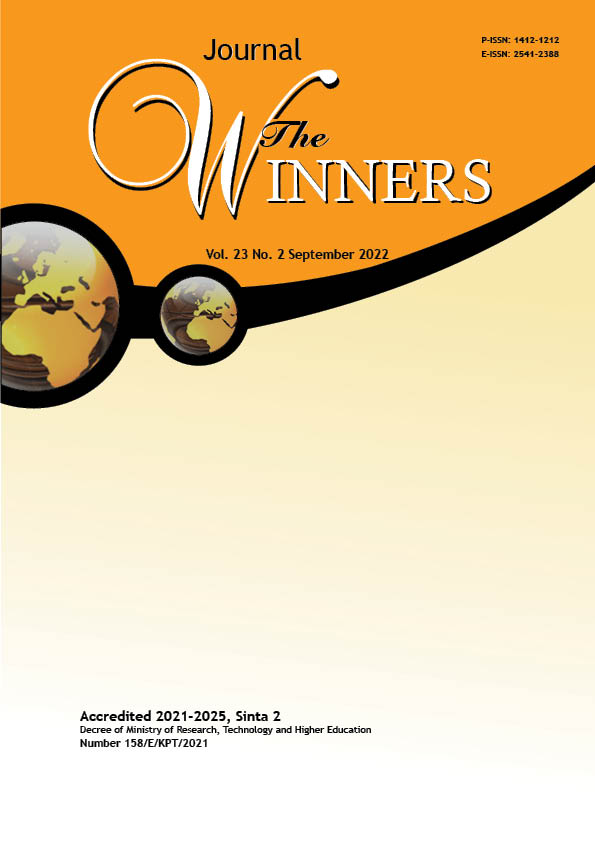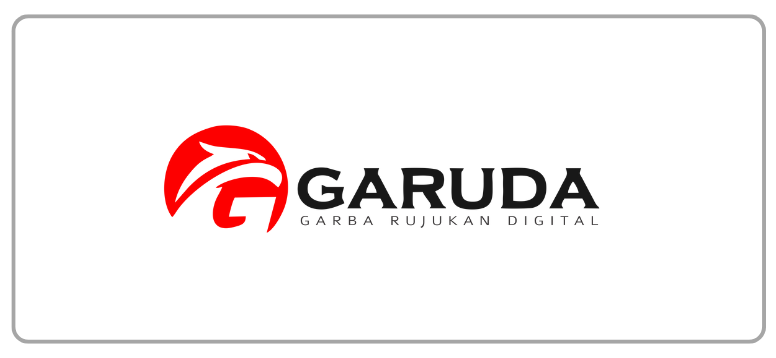The Role of Threshold of Free Shipping Promotion and Product Type on Impulsive Buying Behaviour in E-Commerce Platform
DOI:
https://doi.org/10.21512/tw.v23i2.8140Keywords:
free shipping promotion, product type, impulsive buying behavior, e-Commerce platformAbstract
The research proposed a new insight on how the threshold of free shipping (TFS) promotion type and product type could affect consumers to buy impulsively through emotional consumer reaction of hedonic motivation and positive affect, using the S-O-R model. The data were analyzed based on 188 responses who had completed questionnaires. Data were collected using the purposive sampling method with a minimum sample size of 138 from GPower calculation. The research used ANOVA and Regression Analysis to assess the model and utilizes SPSS. The result clearly illustrates that the maximum threshold of free shipping type with the hedonic product would lead more to consumer hedonic motivation. At the same time, the minimum threshold of free shipping type will induce too when combined with utilitarian products. Furthermore, consumer feelings of hedonic motivation and positive affect play an essential role in determining consumers’ impulsive buying behavior. The research benefits stakeholders in using and maximizing the free shipping promotion program.
References
Ahn, J. & Kwon, J. (2020). The role of trait and emotion in cruise customers’ impulsive buying behavior: an empirical study. Journal of Strategic Marketing, 30(3), 320-333. https://doi.org/10.1080/0965254X.2020.1810743
Amos, C., Holmes, G. R., & Keneson, W. C. (2014). A meta-analysis of consumer impulse buying. Journal of Retailing and Consumer Services, 21(2), 86-97. https://doi.org/10.1016/j.jretconser.2013.11.004
Bandyopadhyay, N., Sivakumaran, B., Patro, S., & Kumar, R. S. (2021). Immediate or delayed! Whether various types of consumer sales promotions drive impulse buying?: An empirical investigation. Journal of Retailing and Consumer Services, 61. https://doi.org/10.1016/j.jretconser.2021.102532
Bellini, S., Cardinali, M. G., & Grandi, B. (2017). A structural equation model of impulse buying behaviour in grocery retailing. Journal of Retailing and Consumer Services, 36, 164-171. https://doi.org/10.1016/j.jretconser.2017.02.001
Chan, T. K. H., Cheung, C. M. K., & Lee, Z. W. Y. (2017). The state of online impulse-buying research: A literature analysis. Information and Management, 54(2), 204-217. https://doi.org/10.1016/j.im.2016.06.001
Chen, C. C. & Yao, J. Y. (2018). What drives impulse buying behaviors in a mobile auction? The perspective of the Stimulus-Organism-Response model. Telematics and Informatics, 35(5), 1249-1262. https://doi.org/10.1016/j.tele.2018.02.007
Dawson, S. & Kim, M. (2010). Cues on apparel web sites that trigger impulse purchases. Journal of Fashion Marketing and Management, 14(2), 230-246. https://doi.org/10.1108/13612021011046084
Gogoi, B. J. & Shillong, I. I. M. (2020). Do impulsive buying influence compulsive buying. Academy of Marketing Studies Journal, 24(4), 1-15.
Grand View Research. (2020). E-commerce Market size, share & trends analysis report by model type (B2B, B2C), by region (North America, Europe, Asia Pacific, Latin America, Middle East & Africa), and segment forecasts. https://www.grandviewresearch.com/industry-analysis/e-commerce-market
Huang, W. H. & Cheng, Y. C. (2015). Threshold free shipping policies for internet shoppers. Transportation Research Part A: Policy and Practice, 82, 193-203. https://doi.org/10.1016/j.tra.2015.09.015
Huang, W. H., Shen, G. C., & Liang, C. L. (2019). The effect of threshold free shipping policies on online shoppers’ willingness to pay for shipping. Journal of Retailing and Consumer Services, 48(December 2018), 105-112. https://doi.org/10.1016/j.jretconser.2019.01.015
Iyer, G. R., Blut, M., Xiao, S. H., & Grewal, D. (2020). Impulse buying: A meta-analytic review. Journal of the Academy of Marketing Science, 48, 384-404. https://doi.org/10.1007/s11747-019-00670-w
Jian, O. Z., Yin, K. Y., & Awang, M. (2020). Developing and validating the measurement model for employee engagement construct using confirmatory factor analysis. International Journal of Academic Research in Business and Social Sciences, 10(8), 413-422. https://doi.org/10.6007/ijarbss/v10-i8/7662
Kimiagari, S., Sharifi, N., & Malafe, A. (2021). The role of cognitive and affective responses in the relationship between internal and external stimuli on online impulse buying behavior. Journal of Retailing and Consumer Services, 61. https://doi.org/10.1016/j.jretconser.2021.102567
Koch, L. (2019, September 18). Etsy’s ad campaign promotes new free shipping strategy—a must have for holiday shoppers. Inside Intelligence. https://www.emarketer.com/content/etsy-ad-campaign-promotes-new-free-shipping-strategy-a-must-have-for-holiday-shoppers
Lim, S. H., Lee, S., & Kim, D. J. (2017). Is online consumers’ impulsive buying beneficial for e-commerce companies? an empirical investigation of online consumers’ past impulsive buying behaviors. Information Systems Management, 34(1), 85-100. https://doi.org/10.1080/10580530.2017.1254458
Loebnitz, N. & Grunert, K. G. (2018). Impact of self-health awareness and perceived product benefits on purchase intentions for hedonic and utilitarian foods with nutrition claims. Food Quality and Preference, 64, 221-231. https://doi.org/10.1016/j.foodqual.2017.09.005
Mahmoud, M. A., Hinson, R. E., & Adika, M. K. (2018). The effect of trust, commitment, and conflict handling on customer retention: The mediating role of customer satisfaction. Journal of Relationship Marketing, 17(4), 257-276. https://doi.org/10.1080/15332667.2018.1440146
Mamuaya, N. C. I. & Pandowo, A. (2018). The effect of the situational factor, store atmosphere, and sales promotion on hedonic shopping motivation and its implication on supermarket consumer impulsive buying in Manado city. Journal of Business & Retail Management Research, 13(2), 1-12. https://doi.org/10.24052/jbrmr/v13is02/art-01
Menon, R. G. V. & Sigurdsson, V. (2016). Conjoint analysis for social media marketing experimentation: choice, utility estimates and preference ranking. Managerial and Decision Economics, 37(4-5), 345-359. https://doi.org/10.1002/mde.2721
Number of e-commerce users in Indonesia from 2017 to 2024. (2020). Statista. https://www.statista.com/forecasts/251635/e-commerce-users-in-indonesia
Ozen, H. & Engizek, N. (2014). Shopping online without thinking: Being emotional or rational? Asia Pacific Journal of Marketing and Logistics, 26(1), 78-93. https://doi.org/10.1108/APJML-06-2013-0066
Park, E. J., Kim, E. Y., Funches, V. M., & Foxx, W. (2012). Apparel product attributes, web browsing, and e-impulse buying on shopping websites. Journal of Business Research, 65(11), 1583-1589. https://doi.org/10.1016/j.jbusres.2011.02.043
Park, J. Y., Back, R. M., Bufquin, D., & Shapoval, V. (2019). Servicescape, positive affect, satisfaction and behavioral intentions: The moderating role of familiarity. International Journal of Hospitality Management, 78, 102-111. https://doi.org/10.1016/j.ijhm.2018.11.003
Salimon, M. G., bin Yusoff, R. Z., & Mohd Mokhtar, S. S. (2017). The mediating role of hedonic motivation on the relationship between adoption of e-banking and its determinants. International Journal of Bank Marketing, 35(4), 558-582. https://doi.org/10.1108/IJBM-05-2016-0060
Saleh, K. (2021, May 10). How free shipping influence online buying decisions. Invesp. https://www.invespcro.com/blog/free-shipping/
Top sites ranking for e-commerce and shopping in Indonesia. (2021). Similarweb. https://www.similarweb.com/top-websites/indonesia/category/e-commerce-and-shopping/
Verhagen, T. & van Dolen, W. (2011). The influence of online store beliefs on consumer online impulse buying: A model and empirical application. Information and Management, 48(8), 320-327. https://doi.org/10.1016/j.im.2011.08.001
Widagdo, B. & Roz, K. (2021). Hedonic shopping motivation and impulse buying: The effect of website quality on customer satisfaction. Journal of Asian Finance, Economics and Business, 8(1), 395-405. https://doi.org/10.13106/jafeb.2021.vol8.no1.395
Wiranata, A. T. & Hananto, A. (2020). Do website quality, fashion consciousness, and sales promotion increase impulse buying behavior of e-commerce buyers? Indonesian Journal of Business and Entrepreneurship, 6(1), 74-85. https://doi.org/10.17358/ijbe.6.1.74
Wu, I. L., Chiu, M. L., & Chen, K. W. (2020). Defining the determinants of online impulse buying through a shopping process of integrating perceived risk, expectation-confirmation model, and flow theory issues. International Journal of Information Management, 52. https://doi.org/10.1016/j.ijinfomgt.2020.102099
Xing, Z. (2018). The impacts of Information and Communications Technology (ICT) and E-commerce on bilateral trade flows. International Economics and Economic Policy, 15(3), 565-586. https://doi.org/10.1007/s10368-017-0375-5
Xu, Y. & Huang, J. S. (2014). Effects of price discounts and bonus packs on online impulse buying. Social Behavior and Personality, 42(8), 1293-1302. https://doi.org/10.2224/sbp.2014.42.8.1293
Zhao, Z. & Liang, F. (2019). Effect of product type and time pressure on consumers ’ online impulse buying intention, 2(2), 137-154. https://doi.org/10.1108/JCMARS-01-2019-0012
Zheng, X., Men, J., Yang, F., & Gong, X. (2019). Understanding impulse buying in mobile commerce: An investigation into hedonic and utilitarian browsing. International Journal of Information Management, 48(February), 151-160. https://doi.org/10.1016/j.ijinfomgt.2019.02.010
Zhu, Y. & Lin, P. (2019). Hedonic or utilitarian, The influences of product type and reward type on consumer referral likelihood. Journal of Contemporary Marketing Science, 2(2), 120-136. https://doi.org/10.1108/jcmars-01-2019-0008
Downloads
Published
How to Cite
Issue
Section
License
Copyright (c) 2022 Readdy Aria Yendola, Nila Armelia Windasari

This work is licensed under a Creative Commons Attribution-ShareAlike 4.0 International License.
Authors who publish with this journal agree to the following terms:
a. Authors retain copyright and grant the journal right of first publication with the work simultaneously licensed under a Creative Commons Attribution License - Share Alike that allows others to share the work with an acknowledgment of the work's authorship and initial publication in this journal.
b. Authors are able to enter into separate, additional contractual arrangements for the non-exclusive distribution of the journal's published version of the work (e.g., post it to an institutional repository or publish it in a book), with an acknowledgment of its initial publication in this journal.
c. Authors are permitted and encouraged to post their work online (e.g., in institutional repositories or on their website) prior to and during the submission process, as it can lead to productive exchanges, as well as earlier and greater citation of published work.
USER RIGHTS
All articles published Open Access will be immediately and permanently free for everyone to read and download. We are continuously working with our author communities to select the best choice of license options, currently being defined for this journal as follows: Creative Commons Attribution-Share Alike (CC BY-SA)

















